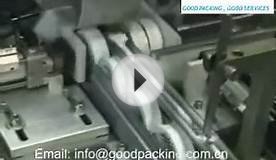Meat packing Industries
Georgeanne M. Artz
JEL Classifications: R11, J43
Keywords: Immigration, Meatpacking, Rural Communities
Over the past five years, meat packing plants have been a focus of increased enforcement by federal immigration agents. Raids at these plants have resulted in the arrests of unauthorized workers and have brought renewed attention to the controversies surrounding employment practices of the meat packing and processing industry. In particular, media accounts of these events have heightened a negative image of meat packing and processing companies as users and exploiters of illegal labor and as poor corporate citizens in their communities.
The U.S. meatpacking industry has a long history of employing immigrant labor. Over a century ago, Upton Sinclair’s classic novel The Jungle depicted the life of immigrants working in the Chicago Stockyards. More recently, census data from 2010 show that roughly one-third of workers in the industry are foreign-born, although the number is likely higher since Census data under report undocumented workers. Jeffrey Passel of the Pew Hispanic Center estimated that 20 to 25% of workers in the meat packing and processing industry were undocumented migrants in 2005, although the current proportion is likely lower due to increased enforcement by U.S. Immigration and Customs Enforcement (ICE) and the recent economic recession.
The controversy surrounding meat packing’s employment of immigrant labor has been particularly acute because of the industry’s more recent expansion into the rural Midwest and South. While in Sinclair’s day meatpacking was predominately an urban industry, by 2000 more than 60% of meat packing and processing jobs were located in rural areas. Most rural areas have a lower number of foreign-born residents than urban areas, so meatpacking growth is more likely to change the demographics of their host communities. And, because meatpacking plants are atypically large relative to other rural employers, industry growth can influence the overall economy of a rural area to a much greater extent than would be seen in an urban one.
Certainly, attracting agricultural processing facilities is a logical strategy for rural communities in agriculturally dependent regions. New facilities provide expanded job opportunities, supplemental income for farm families, increased public revenues, and multiplier effects for further development in related industries. Having processing facilities nearby benefits local livestock producers by reducing transport costs and weight loss of live animals as they are transported to packing plants. Yet concerns about the potential negative impacts on the host communities seem to overshadow the more positive possibilities in many rural communities. A chief fear is that an influx of new immigrant workers will adversely impact the communities in which facilities locate.
Common perceptions have held that in-migration of immigrant workers are associated with a host of social problems, including higher levels of crime, increased welfare loads, heavier burdens on public services such as schools, health care providers and low-income housing and the inconvenience of bilingual commerce...
Growth in the meat packing and processing industry spurred total employment growth in its host counties during the 1990s. However, wage growth slowed relative to counties without the industry, and total income growth in the county did not changed. These findings imply that the negative wage effect roughly canceled out the positive effect of rising employment. Employment net of the meatpacking sector grew more slowly, suggesting that meatpacking and processing employment, rather than having multiplier effects, may in fact crowd out some growth in other sectors of the economy. Although not depicted in Table 1, an important finding is that the estimated magnitudes of the economic impacts were small. For example, a 1% change in a county’s share of industry employment resulted in a less than 0.4% change in total employment.


|
The Packers' encyclopedia; blue book of the American meat packing and allied industries; a hand-book of modern packing house practice, a statistical manual of the meat and allied industries... eBooks |


